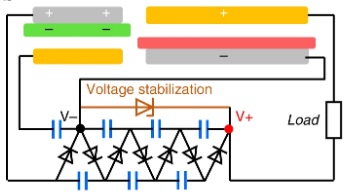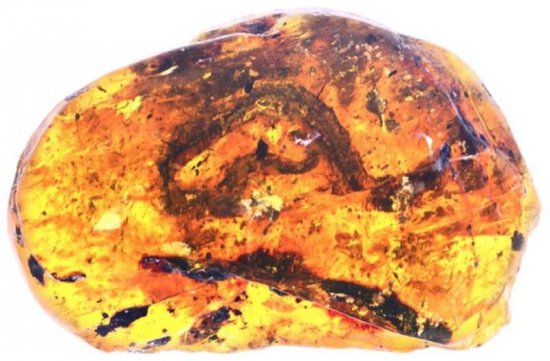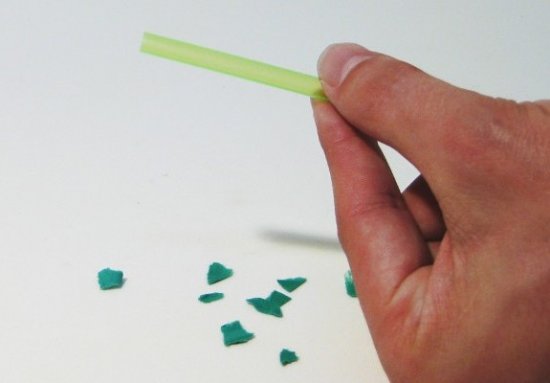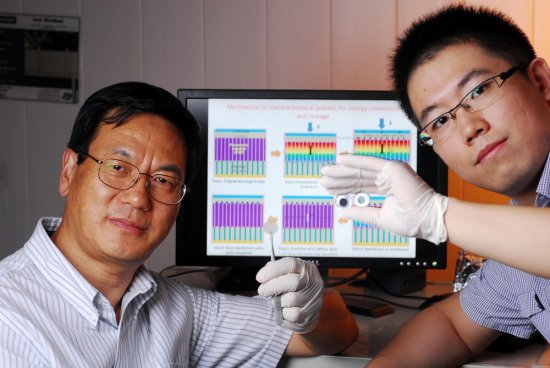Triboelectric effect and TENG nanogenerators
The triboelectric effect is the phenomenon of the appearance of electric charges in some materials when they rub against each other. This effect is inherently a manifestation contact electrification, which has been known to mankind since ancient times.
Even Thales of Miletsky observed this phenomenon in experiments with an amber stick rubbed with wool. By the way, the very word "electricity" originates from there, because translated from Greek, the word "electron" means amber.
Materials that can exhibit a triboelectric effect can be arranged in the so-called triboelectric order: glass, plexiglass, nylon, wool, silk, cellulose, cotton, amber, polyurethane, polystyrene, Teflon, rubber, polyethylene, etc.
At the beginning of the line there are conditionally "positive" materials, at the end - conditionally "negative". If you take two materials of this order and rub them against each other, then the material closer to the "positive" side will be positively charged and the other negatively charged. For the first time, a triboelectric series was compiled in 1757 by the Swedish physicist Johann Carl Wilke.
From a physical point of view, the one of the two materials rubbing against each other will be positively charged, which differs from the other by its larger dielectric constant. This empirical model is called Cohen's rule and is mainly associated with to dielectrics.
When a pair of chemically identical dielectrics rub against each other, the denser one will acquire a positive charge. In liquid dielectrics, a substance with a higher dielectric constant or higher surface tension will be positively charged. Metals, on the other hand, when rubbed against the surface of a dielectric, can become both positively and negatively electrified.

The degree of electrification of bodies rubbing against each other is more significant, the greater the area of their surfaces. The friction of dust on the surface of the body from which it separated (glass, marble, snow dust, etc.) is negatively charged. When the dust is sifted through a sieve, the dust particles are also charged.
The triboelectric effect in solids can be explained as follows. Charge carriers move from one body to another. In semiconductors and metals, the triboelectric effect is due to the movement of electrons from a material with a lower work function to a material with a higher work function.
When a dielectric rubs against a metal, triboelectric electrification occurs due to the transition of electrons from the metal to the dielectric. When a pair of dielectrics rub together, the phenomenon occurs due to the mutual penetration of the corresponding ions and electrons.
A significant contribution to the severity of the triboelectric effect can be the different degrees of heating of the bodies in the process of their friction against each other, since this fact causes the displacement of carriers from local inhomogeneities of a more heated substance — "true" triboelectricity. In addition, mechanical removal of individual surface elements of piezoelectrics or pyroelectrics can lead to a triboelectric effect.
Applied to liquids, the manifestation of the triboelectric effect is related to the appearance of electric double layers at the interface between two liquid media or at the interface between a liquid and a solid. When liquids rub against metals (during flow or impact splashes), triboelectricity occurs due to the separation of charges at the interface between the metal and the liquid.
Electrification by rubbing two liquid dielectrics is caused by the presence of electric double layers at the interface between liquids whose dielectric constants are different. As mentioned above (according to Cohen's rule), a liquid with a lower dielectric constant is negatively charged, and a liquid with a higher one is positively charged.
The triboelectric effect when splashing liquids due to impact on the surface of a solid dielectric or on the surface of a liquid is caused by the destruction of electric double layers at the boundary between liquid and gas (the electrification in waterfalls occurs precisely by this mechanism).
Although triboelectricity leads in some situations to unwanted accumulation of electrical charges in dielectrics, such as on synthetic fabric, the triboelectric effect is nevertheless used today in the study of the energy spectrum of electron traps in solids, as well as in mineralogy to study luminescent centers , minerals, determining the conditions for the formation of rocks and their age.
TENG triboelectric nanogenerators
At first glance, the triboelectric effect appears to be energetically weak and inefficient due to the low and unstable density of electric charge involved in this process. However, a group of scientists at Georgia Tech have found a way to improve the energy characteristics of the effect.
The method is to excite the nanogenerator system in the direction of the highest and most stable output power, as is usually done with respect to traditional induction generators with magnetic excitation.
In conjunction with well-designed resulting voltage multiplication schemes, a system with external self-charge excitation is capable of exhibiting charge densities in excess of 1.25 mC per square meter. Recall that the resulting electric power is proportional to the square of the given quantity.
The development of scientists opens a real prospect for the creation in the near future of practical and high-performance triboelectric nanogenerators (TENG, TENG) for charging portable electronics with energy obtained mainly from the daily mechanical movements of the human body.
Nanogenerators promise to have low weight, low cost, and will also allow you to choose for their creation those materials that will most effectively generate at low frequencies of the order of 1-4 Hz.
A circuit with external charge pumping (similar to an induction generator with external excitation) is considered more promising at the moment, when part of the generated energy is used to support the generation process and increase the working charge density.
As conceived by the developers, the separation of the generator capacitors and the external capacitor will allow exciting generation through the external electrodes without directly affecting the triboelectric layer.
The excited charge is supplied to the electrode of the main TENG nanogenerator (TENG), while the charge excitation system and the main output load TENG work as independent systems.
With a rational design of the charge excitation module, the accumulated charge in it can be replenished by feedback from the TENG itself during the discharge process. In this way, self-excitation of the TENG is achieved.
In the course of the research, the scientists studied the effect on the generation efficiency of various external factors, such as: the type and thickness of the dielectric, the material of the electrodes, the frequency, the humidity, etc. At this stage, the TENG triboelectric layer includes a polyimide dielectric kapton film with a thickness of 5 microns , and the electrodes are made of copper and aluminum.

The current achievement is that after 50 seconds operating at a frequency of only 1 Hz, the charge is excited quite efficiently, which gives hope for the creation in the near future of stable nanogenerators for wide applications.
In the TENG structure with external charge excitation, the separation of the capacitances of the main generator and the output load capacitor is achieved by separating three contacts and using insulating films with different dielectric characteristics to achieve a relatively large change in capacitances.
First, the charge from the voltage source is supplied to the main TENG, on the capacitance of which the voltage builds up while the device is in the contact state of maximum capacitance. As soon as the two electrodes separate, the voltage increases due to a decrease in capacitance and charge flows from the base capacitor to the storage capacitor until an equilibrium state is reached.
In the next state of contact, the charge returns to the main TENG and contributes to the generation of energy, which will be greater the higher the dielectric constant of the film in the main capacitor. Achieving the design voltage level is done using a diode multiplier.




